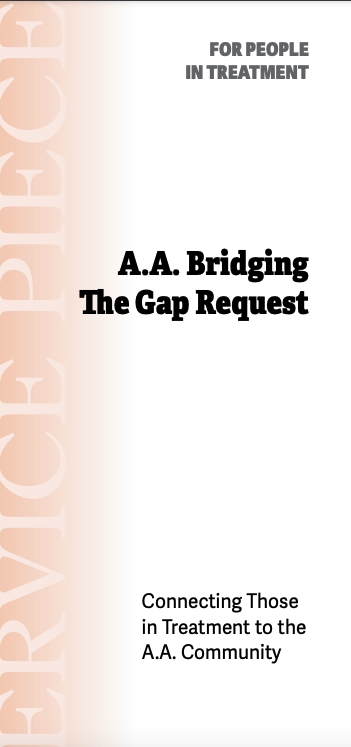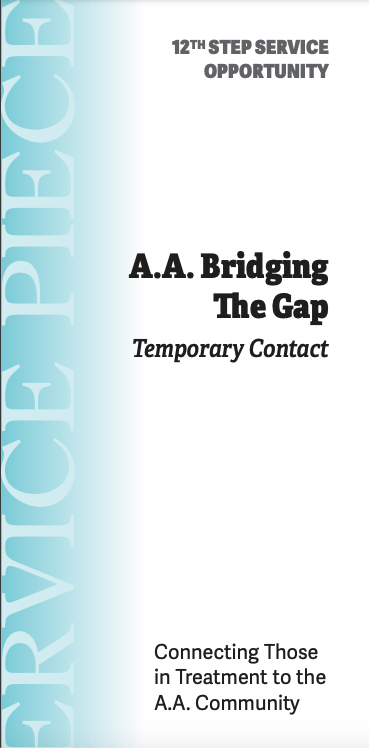Bridging the GAP
Becoming a temporary contact between treatment and A.A.
Register for our help Bridging the GAP between your treatment program and joining our local A.A. Community.
Would you like to Volunteer helping connecting those in treatment to the A.A. Community?
What is Bridging the Gap?
Bridging the Gap is a temporary contact program for individuals getting out of treatment or other facilities. A separate program, “Contact upon release” has been created for those leaving correctional facilities.* The concept behind “Bridging the Gap” (BTG) is as old as Alcoholics Anonymous itself — one drunk talking to another, each reinforcing the other’s understanding that they can find a way to face life sober, and build meaningful relationships without alcohol. In order to bridge the gap, A.A. members have volunteered to be temporary contacts and introduce newcomers to Alcoholics Anonymous.
How Does Bridging the Gap Work?
- Bridging the Gap can provide a temporary contact for alcoholics in treatment centers, medical facilities, crisis centers, detox centers or other facilities. The intent of Bridging the Gap is to provide the recently released or discharged alcoholic with temporary help for a limited time. Keep in mind that this is basic Twelfth Step work.
- Experience suggests that it is best for a BTG contact to be accompanied by another A.A. member when meeting the newcomer.
- Experience also suggests that temporary contact and newcomers be matched by gender, and if possible, by age. Concerns about safety are of particular importance to A.A. members. When safety concerns arise, local or area committees at the district, area, intergroup or central office should be consulted. Of course, in an emergency please contact 911.
- In some parts of the U.S. and Canada, BTG operates as a stand-alone committee, while in others Bridging the Gap is part of the work of a Treatment or Hospitals and Institutions (H&I) committee. In still others, the work is organized by a local intergroup committees or central offices. Regardless of how it is organized, all share the basic goal of providing a bridge that helps newcomers find Alcoholics Anonymous.
- In many areas, liaisons have been established among different A.A. service committees. There are many instances of overlapping responsibilities. It should be clearly established that A.A. committees are not in competition with each other. Local circumstances determine who does what.
- It may be helpful for you as a temporary contact to attend Bridging the Gap workshops or attend meetings of your local area’s Treatment or H&I committees.




